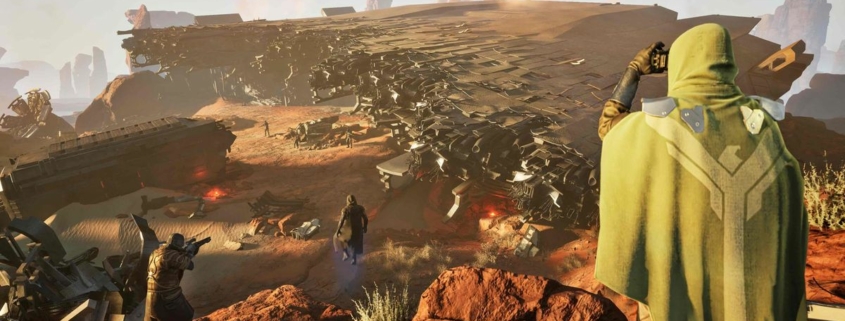Dune: Awakening is threatening to turn me into a survival MMO guy after a lifetime as a devoted videogame hermit




Here is the precise point in my hands-off Summer Game Fest Dune: Awakening demo that I whispered a soft “Oh no” to myself. It was when our demo-er, in a spice-fueled fit of pique, butted up against the wall of a Harkonnen stronghold and immediately began climbing it, Breath-of-the-Wild-style (or Funcom-style, really, you could do much the same thing in Conan Exiles).
I was worried not because what I saw displeased me, but the opposite. It was precisely the kind of slightly janky systemic weirdness that I have a long track record of going utterly out of my gourd for, and what I’d seen of Dune: Awakening before our hero started clambering all over the joint had already sparked my curiosity. I was undergoing the precise same realisation that my colleagues Wes Fenlon and Chris Livingston experienced when they saw the game earlier this year.
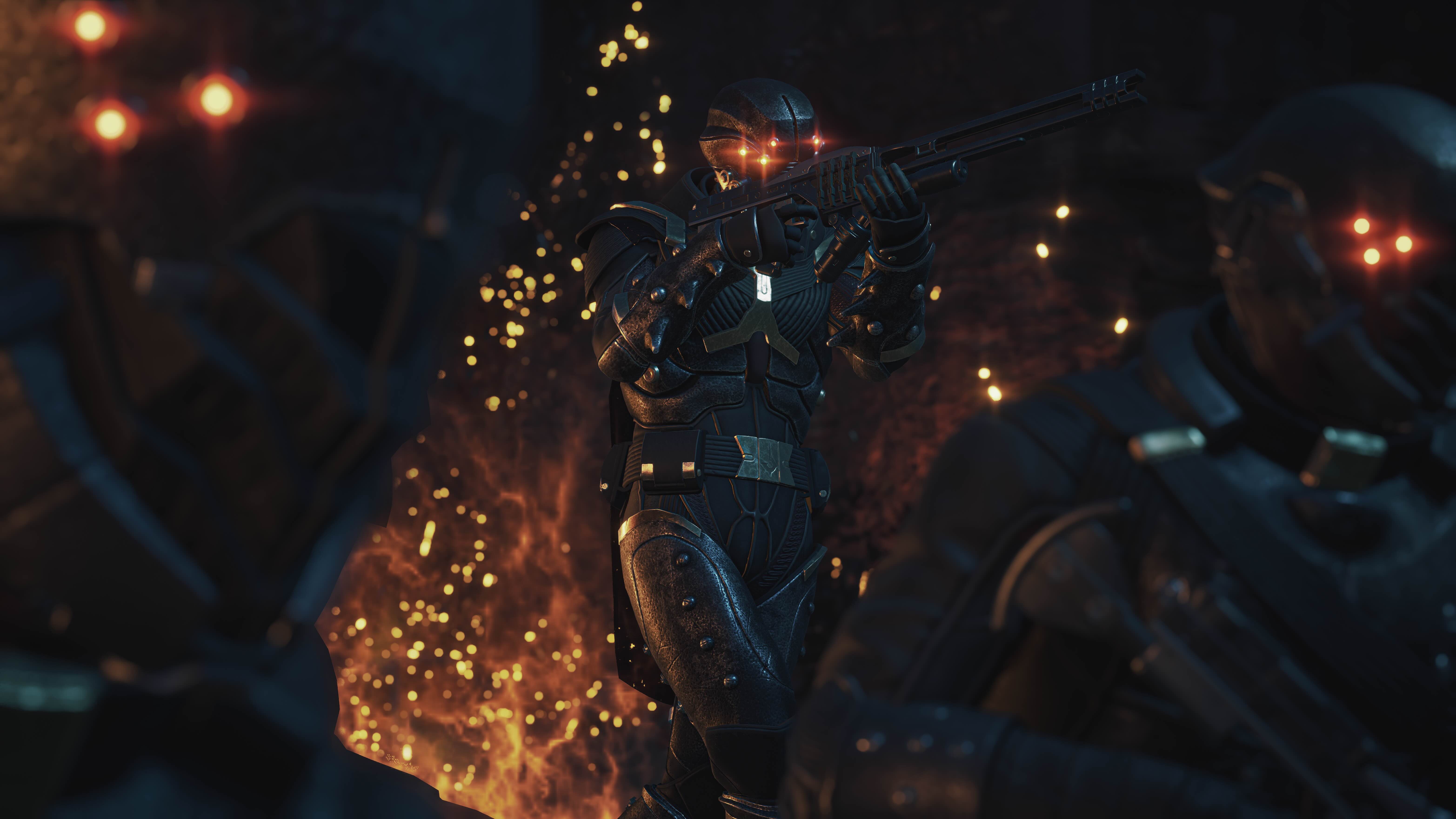
I’ve never been a survival game or an MMO guy: Survival is hard enough in real life and friendships distract me from my engagements with esoteric politics and the original Xbox launch line-up, and yet Dune: Awakening had me wondering if maybe, just maybe, I was going to end up dropping a bunch of hours in the deserts of Arrakis.
Picking sides
The demo I saw was, more or less, a day in the life of a Harkonnen flunky in the 40-player Hagga Basin area. Dune: Awakening takes place in an alternate history where protagonist Paul Atreides was never born, his mother Jessica instead following the orders of her secretive Bene Gesserit masters to give birth to a daughter instead.
This means, somehow, that the Harkonnens don’t quite manage to pull off their decisive decapitating strike on the Atreides that they do in the films and books. Duke Leto is alive and very upset, and Arrakis is in the grip of a destructive War of Assassins. As a newborn Dune-head, it’s one of the most interesting parts of the game, opening up all sorts of cool opportunities for narrative experimentation in Herbert’s universe.
It’s also a lucrative opportunity for a blank-slate protagonist: The game will let you choose between the factions at war for Arrakis, building rep and accruing status with them as you go. Our demo-er had gone for the villainous, oleaginous Harkonnens over the less (outwardly) dastardly Atreides, and so we spent a fair amount of time hanging around the faction’s bulbous black architecture imported from its homeworld of Giedi Prime, picking up missions off the faction hub contract board and generally getting up to no good. Like climbing all over everything.
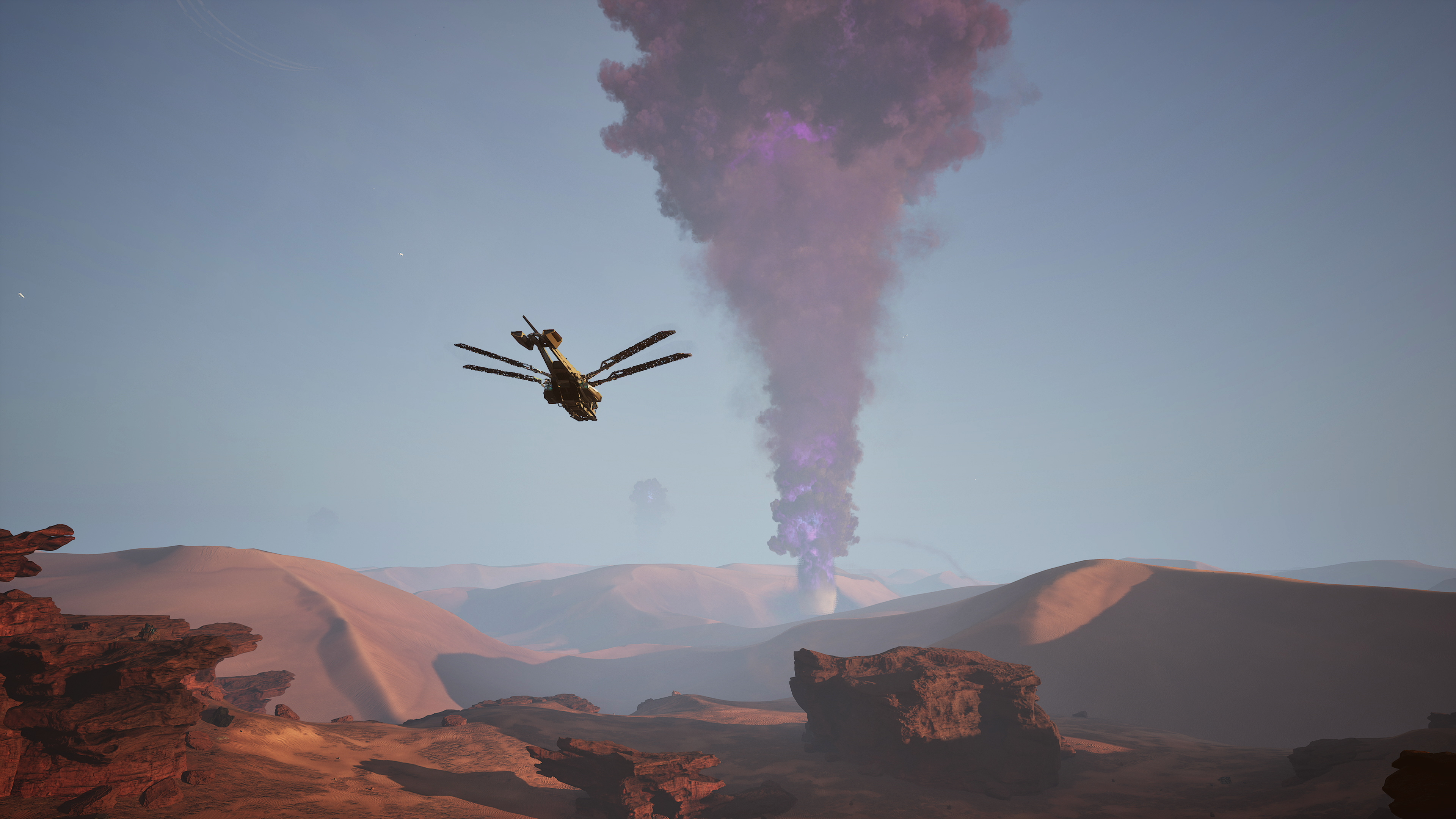
We only spent a little time hanging out with the Harkonnens, though. Most of our time was spent ornithoptering our way around the game’s PvE survival areas, which isn’t too complicated to do. You’ll have to keep an eye on your engine temperature and health, but apart from that, getting around in the skies of Arrakis doesn’t look any more complicated than using a flying mount in WoW.
Gathering dust
We were on the hunt, naturally, for resources. This is a survival game, after all, and Arrakis teems with useful bits and bobs to turn into gear and materials for your base. Actually gathering the stuff is a bit tricky, though: A key part of the UI is a noise meter, measuring just how much sound you’re making at any given time. An ornithopter, for instance, with its beating wings and noisy landings, generates a whole bunch of sonic pollution. That’s awkward, since the enormous, all-devouring worms that populate Arrakis are famously not keen on fuss, and drawing them to your location is a great recipe for getting eaten and losing all your hard-earned stuff.
Duke Leto is alive and very upset, and Arrakis is in the grip of a destructive War of Assassins
Alas, our demo-er was too adept at navigating the desert to attract the worms, so he was able to gather up what he was looking for (and I admit it, it had a very strange, Herbert-esque name I did not write down and have now forgotten) and go on his merry way.
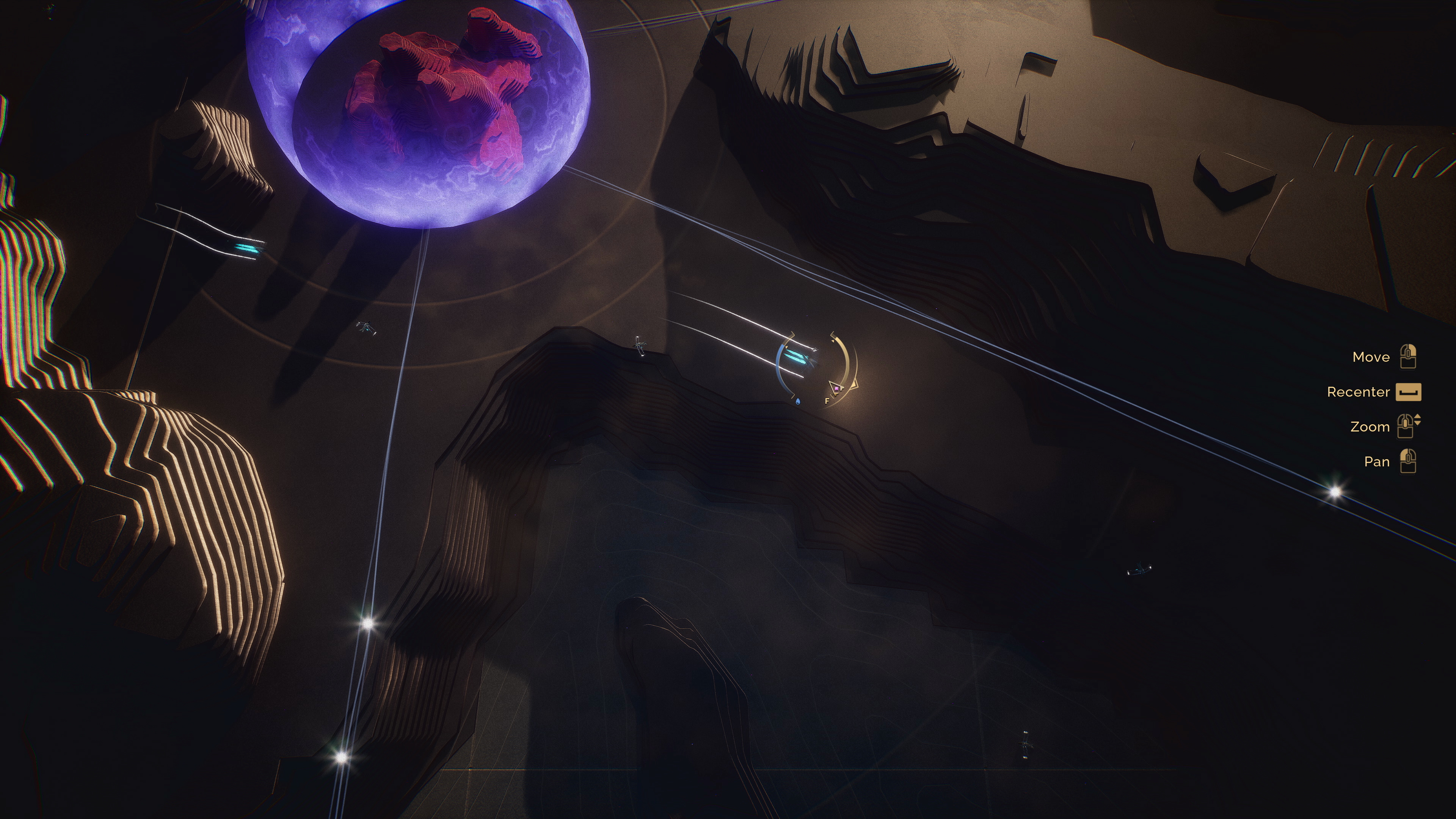
It’s this part of the game in particular I was largely unmoved by. The wrinkle of avoiding the worms is an interesting one, but ultimately, gathering materials in Dune: Awakening didn’t look like anything I’ve not seen in other survival games, Dune-y naming conventions aside. I’ve simply never been one for combing the landscape for deposits, and I always find myself a bit put out—even in the odd survival game I love, like Subnautica—when the requirements for gear and base-stuff start getting really high. Nothing to fear if you’re already a sucker for that loop, but it was the other parts of the demo—the narrative, the setting, the combat, and the MMO stuff—that piqued my interest in the game as a whole.
Parts like, for instance, plumbing the various wreckages that litter Arrakis’ surface. That War of Assassins is making a right old mess, and the great hulking starship corpses it’s left all over the place are ripe for plundering. That means fighting your way through whoever you find there, including other players if you’re in the proper PvP zone.
Which, at least at this stage of development, looks charmingly odd, with the animations looking a little hitchy and staccato as our Harkonnen agent hero leapt about the wreckage of a crashed ship battling the villains within. I admit, I found it more charming than anything, but it was actually the activity of combat that caught my interest most. The presence of Dune shield tech makes the entire thing a process of navigating your own—and your enemies’—shield use: Keeping a beady eye on enemies to get hits in when they drop their defence, and deciding when to drop your own shield to get skills off.
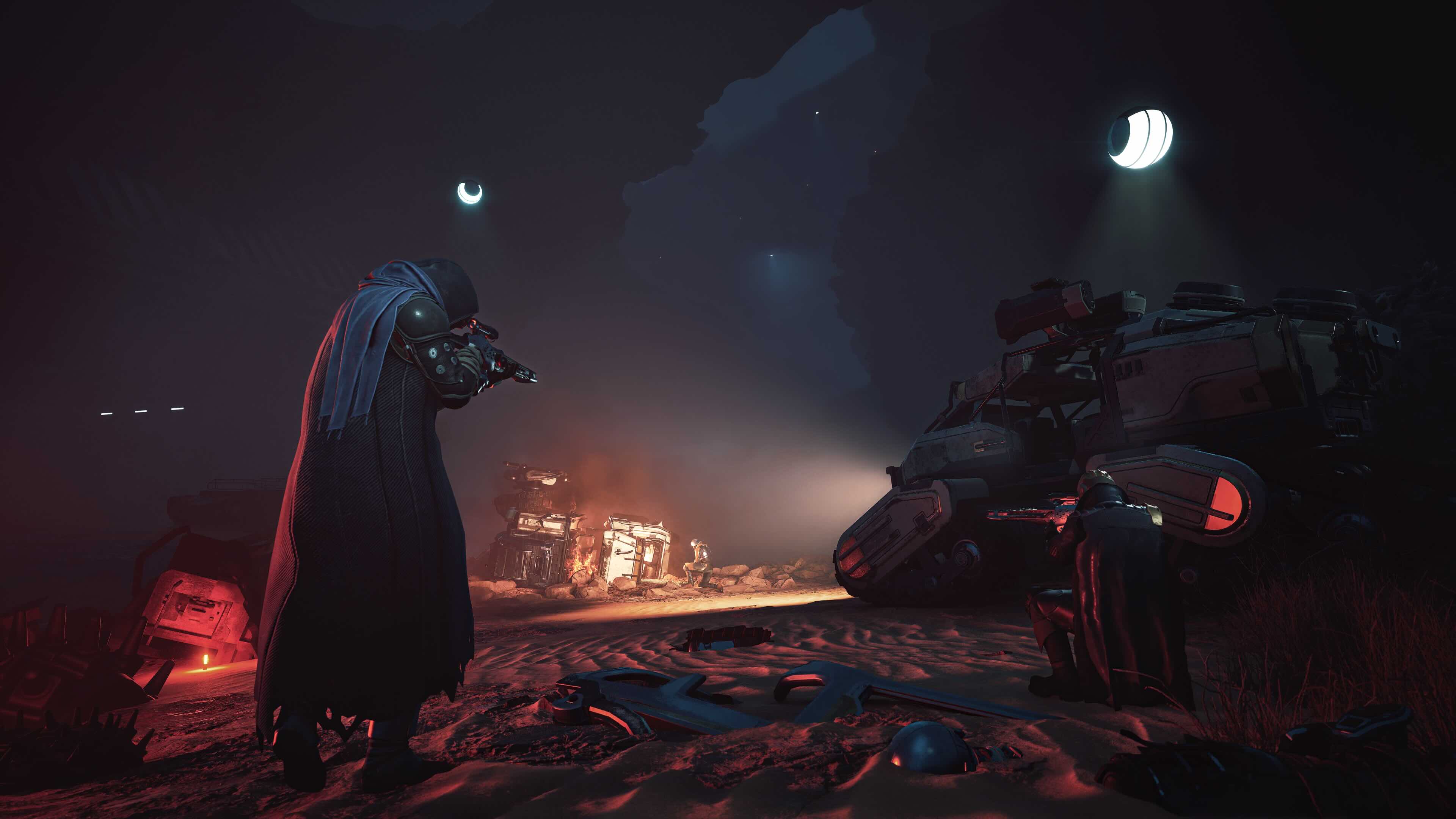
Those skills, by the way, are acquired from multiple skill trees, each represented by a different mentor you’ll have to curry favour with to progress. Eventually, you’ll be able to unlock every skill available, at which point, I hope, you get to become God-Emperor like Leto II (but probably not).
Our enemies dead, we opened our end-of-dungeon crate and were rewarded with some materials—Microflora Fiber—and a one-time-use rifle schematic, a bit of familiar MMO-ness in the Dune-iverse.
Desert power
But the bulk of Dune: Awakening’s MMO stuff, in Funcom’s eyes, will take place in its Deep Desert: An enormous 450 km area that can house hundreds of players, and which will get wiped out weekly by “Coriolis storms”. This is the bit of the game that will play host to its most desirable resources and most destructive conflicts, with the devs envisioning enormous fights taking place over spice and other resources on a weekly basis, before the storm comes and mixes everything up again, including by destroying your Deep Desert bases.
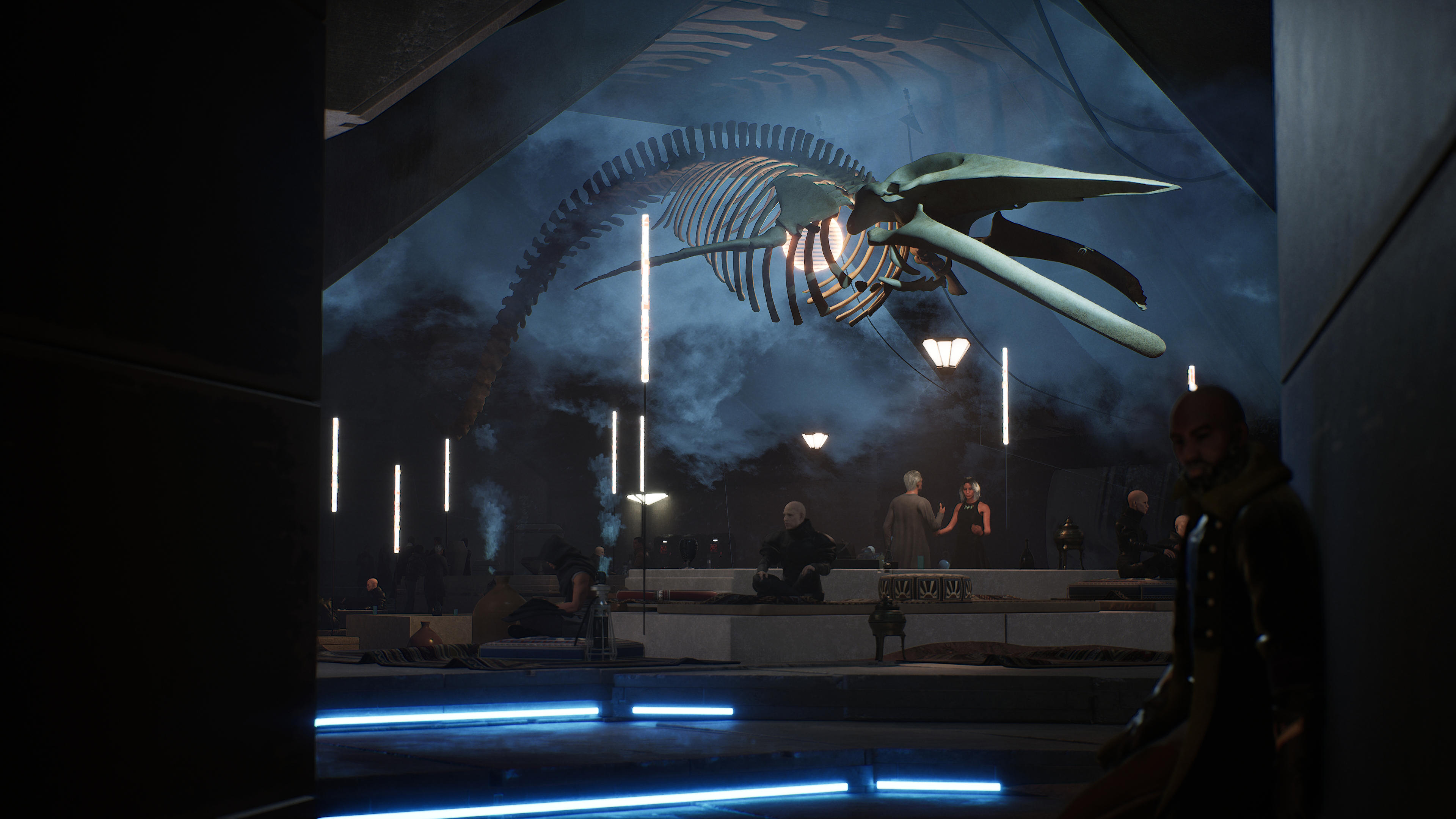
It sounds like a recipe for enjoyable, constantly shifting chaos, and it’s the part of the game I was most eager to see more of as I came out of the demo. Understandably, given that Dune: Awakening does not, as an unreleased game, currently have the hundreds of players necessary to populate its Deep Desert, my exposure to it came mostly in the form of some wandering around and a lot of verbal description from the Funcom team.
A verbal description I’d like to see become reality. The idea of gearing up for a weekly sojourn into the Deep Desert badlands—either alone or with a gaggle of pals—is pretty appealing, and the promise that it’ll get wiped every week sounds like a good way to stop the area congealing into a fiefdom ruled over by a few high-level players. Like so much else of what I saw—resource-gathering aside—it seems like a clever way to mix up both the traditional genre mechanics I’m familiar with and Dune itself, and I’m curious to see more.
Source link

